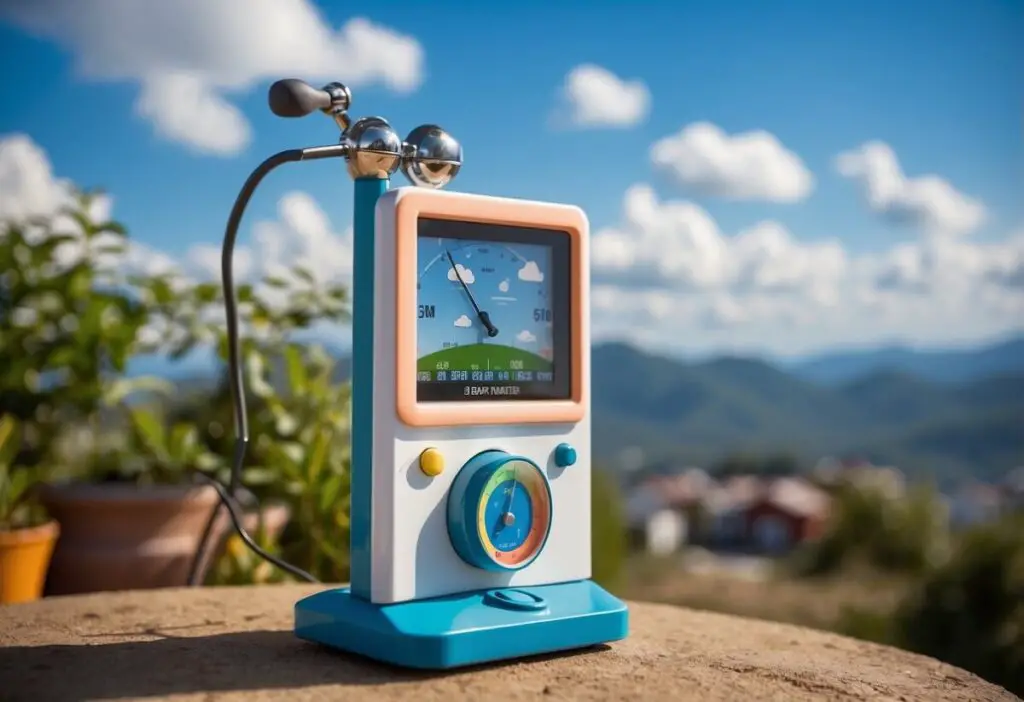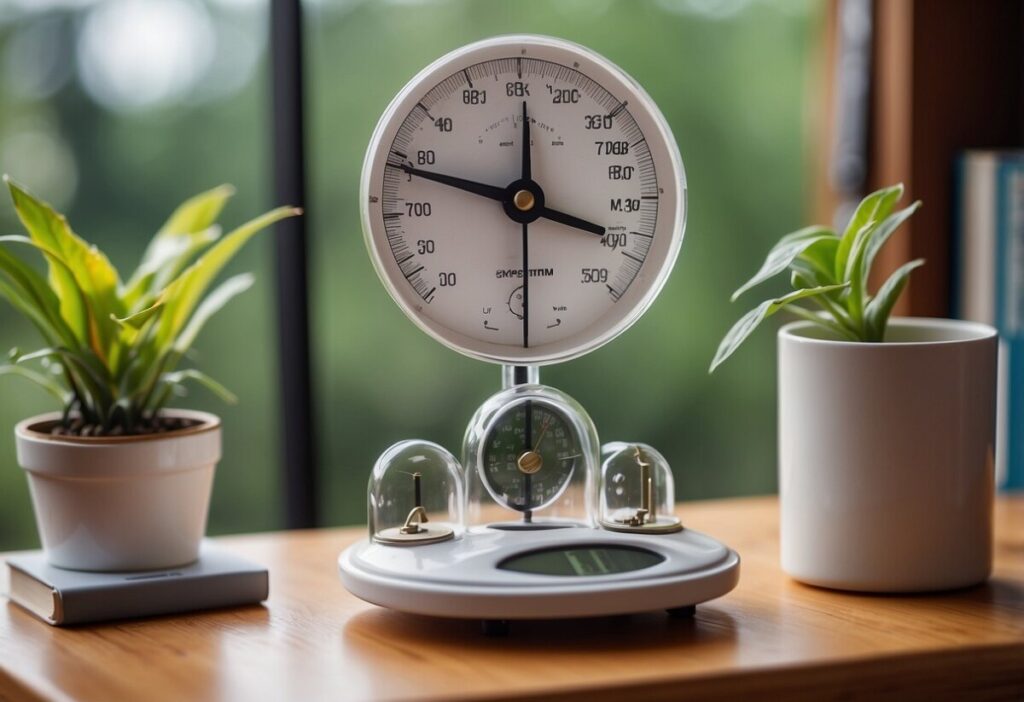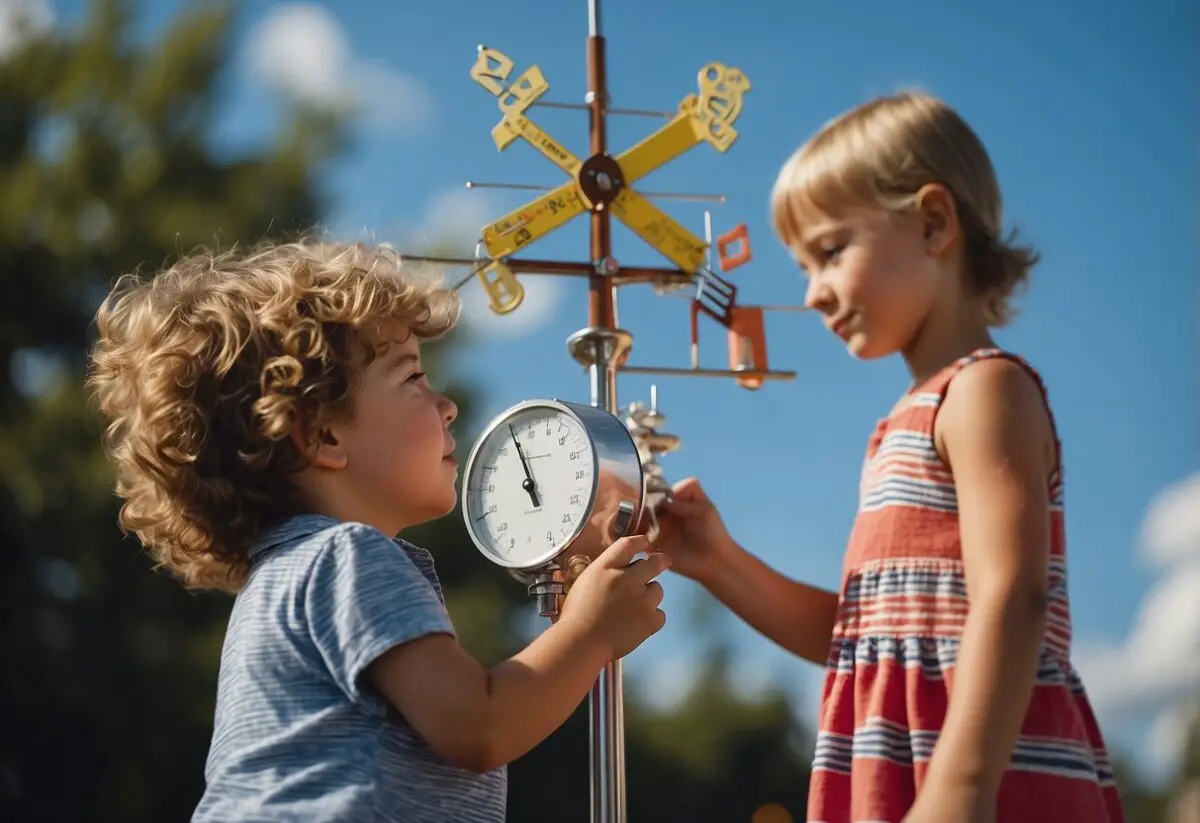Creating a weather station can be an engaging and educational activity for kids. Kids can learn about meteorology and track local weather patterns by constructing tools like a rain gauge, wind vane, and barometer. This hands-on project transforms complex weather concepts into accessible, fun learning experiences.
You don’t need to buy expensive equipment to get started. Many of the essential components can be made with household items. For instance, a simple rain gauge can be created using a plastic bottle and some tape, as detailed in this guide to building a weather station at home.
By involving kids in building the weather station, they become active participants in their learning journey. They can observe and record changes in temperature, humidity, and precipitation, just like real meteorologists.
This project encourages curiosity and critical thinking, making it a perfect educational activity for families so let’s get started!
Table of Content
- Understanding the Basics of Weather
- The Science behind Measuring Weather
- Educational Activities and Experiments
- Building the Weather Station Step-by-Step
- Tracking and Recording Weather Data
- Supplementary Weather Activities
- Wrapping Up
Understanding the Basics of Weather

Weather influences various aspects of our daily lives, from the clothes we wear to the activities we plan. Understanding weather involves exploring its causes and the role atmospheric conditions play in shaping it.
What Is Weather and Why Does It Change?
Weather refers to the state of the atmosphere at a specific place and time. Key elements include temperature, precipitation (rain, snow, ice), and wind patterns. These dynamic conditions can change rapidly due to various factors.
One primary cause of weather changes is the sun’s differential heating of the Earth’s surface. Areas receiving more direct sunlight tend to be warmer, while regions with less sunlight are cooler. This creates variations in air pressure, leading to wind and movement of weather systems.
The interaction between warm and cold air masses often results in weather changes. For example, when a warm air mass meets a cold one, it can cause storms or precipitation. Understanding these fundamentals helps in weather prediction and preparedness.
The Role of Atmosphere in Weather Patterns
The atmosphere plays a crucial role in shaping weather patterns. Composed of layers, each with different temperatures and pressure levels, it acts as a complex system governing weather.
Atmospheric pressure, the force exerted by the air above, influences weather conditions. High-pressure areas typically bring fair and sunny weather, while low-pressure areas can lead to cloudy or stormy conditions.
The Earth’s rotation also affects weather patterns through the Coriolis effect, influencing wind direction and strength. Furthermore, the atmosphere’s interaction with the Earth’s surface can lead to localized weather phenomena, like coastal breezes or mountain-induced rain.
Understanding these atmospheric components is essential for comprehending weather dynamics and predicting future conditions.
The Science behind Measuring Weather

Weather measurement involves various tools and instruments designed to track different meteorological parameters. These tools help in understanding weather patterns and making accurate forecasts.
Tools for Measuring Different Weather Parameters
To measure weather accurately, you need several essential instruments. A thermometer is used to measure temperature, providing critical information about how hot or cold it is. A barometer measures air pressure, which can help predict weather changes.
Humidity is gauged using a hygrometer, indicating the amount of moisture in the air. Precipitation levels are tracked with a rain gauge. By marking off measurements on the side of the container, you can track rainfall accurately. Wind speed is measured with an anemometer, and a wind vane shows the wind’s direction.
These instruments can be part of a home weather station or more professional weather stations used by meteorologists.
Understanding Weather Data and Predictions
Weather data collected from these instruments provide valuable insights. Temperature readings help identify daily or seasonal trends. Air pressure measurements from a barometer indicate impending changes in weather; a drop may signal rain, while a rise can mean clearer skies.
Humidity levels allow predictions about fog or dew formation. Tracking precipitation helps in understanding rainfall patterns over time. Wind speed and direction are critical for storm tracking and predicting weather changes.
Meteorologists use this collected data to create weather forecasts. By analyzing patterns and historical data, they can make accurate predictions. Your home weather station can help you better understand these trends and even make simple predictions based on your measurements.
Educational Activities and Experiments

Engaging children in building and using a DIY weather station can spark their curiosity and enhance their understanding of weather science. These hands-on activities and experiments foster critical thinking, observation skills, and a love for STEM.
Creating a DIY Weather Station
Building a DIY weather station offers children a practical approach to understanding weather. Start by gathering materials such as thermometers, rain gauges, and wind vanes. The Inventors of Tomorrow guide suggests using simple items like plastic bottles and pebbles for creating tools like a rain gauge.
Steps to build:
- Assemble a thermometer using alcohol and beads.
- Create a rain gauge by cutting a plastic bottle and adding markings.
- Design a wind vane with a straw, pin, and paper.
These activities not only teach basic science concepts but also involve math skills in measuring and recording data, engaging children deeply in their studies.
Conducting Reliable Weather Experiments at Home
Once the weather station is set up, use it to conduct daily weather observations and track changes. Encourage your kids to make predictions and compare them to the actual data recorded. The TeachEngineering activity emphasizes the importance of using senses and cloud knowledge for accurate forecasts.
Useful Experiments:
- Measure daily temperature fluctuations.
- Track rainfall over a week.
- Observe wind patterns and direction changes.
These experiments make learning interactive and fun. They help children discover patterns, engage in scientific study, and develop a routine of educationally rich activities with their family.
Building the Weather Station Step-by-Step
Creating a weather station involves gathering necessary materials and assembling the components carefully. This guide provides detailed instructions to help you build your own weather station using easy-to-find items.
Gathering Materials and Tools
To start, you’ll need a variety of materials and tools. These include:
- Plastic bottle: A large plastic bottle will serve as the base for the rain gauge.
- Straw: Used for the anemometer to measure wind speed.
- Ruler: Essential for measuring rainfall.
- Stick: Acts as a support structure.
- Cardboard: For creating weather measurement tools.
- Tape and rubber bands: For assembling the different parts.
- Pebbles or sand: To add weight and stability.
- Clay: For securing the components.
Make sure to gather all these materials before starting the assembly. You may also want to have basic tools like scissors and markers on hand to help with cutting and labeling.
Assembling Your Home Weather Station
Begin the assembly by constructing the rain gauge. Cut the plastic bottle in half, and place pebbles or sand in the bottom half for weight. Invert the top half to act as a funnel and secure it with tape.
For the anemometer, attach the straw to a piece of cardboard. Mark one end of the straw to help track wind direction. Use tape or rubber bands to secure the straw to the stick, ensuring it can rotate freely.
Next, create a wind vane with cardboard. Cut out an arrow shape and attach it to another straw. Fix this straw to the top of the stick using clay, allowing it to swivel and point into the wind.
Finally, set up your weather station in an open area. Insert the stick into the ground or secure it with more pebbles or sand to ensure stability. Place the rain gauge nearby, and your DIY weather station is complete.
Tracking and Recording Weather Data
By diligently tracking and recording weather data, you can gain valuable insights into local and global weather patterns. This process enhances your prediction abilities and understanding of various weather systems.
Maintaining Your Weather Journal
A weather journal is essential for systematically recording your observations. Use it to log data such as temperature, wind direction, and water levels.
Create a table with columns for different elements like date, time, temperature, wind direction, rainfall amount, and other observations. Collect and record this data at the same time each day for consistency.
For example, when measuring rainfall, use a rain gauge to see how much rain has fallen. Note the wind direction using a weather vane and compass. Track temperature changes with a thermometer. Regular updates help notice patterns and anomalies in the data.
Using data logs, you can draw and update weather charts. These visual aids simplify pattern identification and help forecast future conditions. Detailed records may also include notes on cloud cover, air pressure, and humidity. By maintaining a comprehensive journal, you can make more accurate weather predictions based on observed trends.
Understanding Global Weather Systems Through Observation
Global weather patterns are influenced by various systems and can be tracked through multiple sources. Regularly check the internet, radio, and television for updates on global weather trends. Use this information to compare with your local observations.
Follow daily updates to understand how larger systems like jet streams or ocean currents influence local weather. Recording these observations enhances your knowledge of global patterns. Compare your local data with global weather maps and notice how high and low-pressure systems affect your region.
Identify correlations between events like tropical storms, weather fronts, and changes in your recorded data. Understanding these connections enriches your comprehension of how local observations fit into broader weather systems. By integrating global trends with your data, you can gain a holistic view and improve your prediction accuracy.
Supplementary Weather Activities

Incorporating supplementary activities can enhance your child’s understanding of the weather. These activities not only make learning fun but also help in grasping the significance of weather in daily life.
Interactive Learning with Your Weather Station
Make daily weather observations using your DIY weather station to engage your child. Encourage them to record data like air temperature, wind speed, and relative humidity. This routine will foster curiosity about how Earth’s atmosphere works.
You can also involve the whole family in managing a weather journal. Have your child note the weather conditions every day, track patterns, and make predictions.
Organize mini-experiments to explain concepts such as the water cycle. For instance, create a small rain gauge to measure rainfall and show the water cycle in action. Another idea is to simulate tornadoes or hurricanes using simple household items.
Teaching the Significance of Weather in Everyday Life
Use real-life examples to teach your child the importance of weather. Discuss how air temperature and wind affect decisions like what clothes to wear or whether to carry an umbrella.
Explain extreme weather conditions like tornadoes and hurricanes, emphasizing the need for safety measures. This can lead to discussions about climate change and how it impacts the weather. Highlight the role of water in the atmosphere and how it contributes to weather phenomena.
Wrapping Up
Building a weather station for kids is a fantastic way to introduce them to the fundamentals of meteorology. Through this project, children can develop skills in observation, data collection, and analysis. Creating your own weather tools, such as a rain gauge, wind vane, anemometer, and thermometer, can be both educational and enjoyable. Encouraging young minds to explore and experiment will help them appreciate the fascinating world of weather and the scientific principles behind it!


